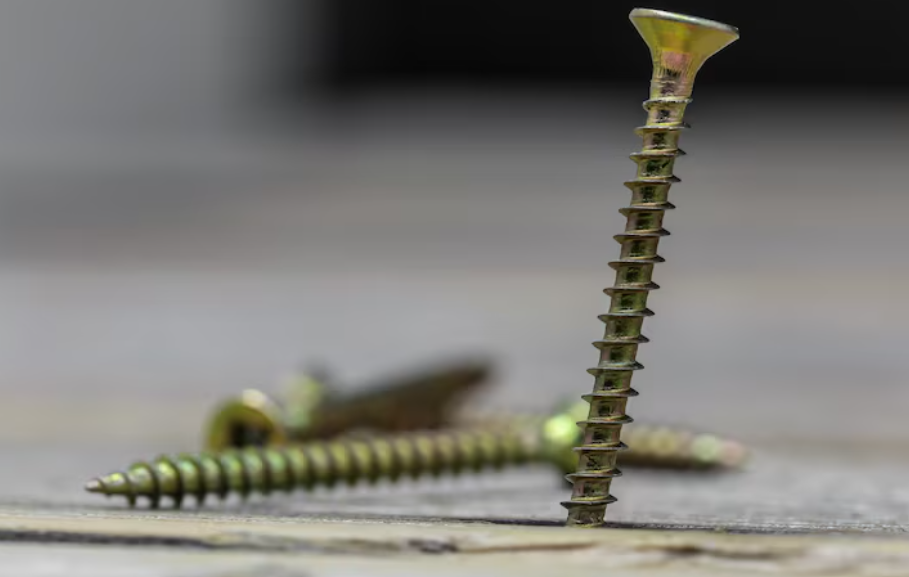Selecting the correct screw size is essential for ensuring proper fit, holding power, and mechanical performance. Two of the most important factors in screw sizing are thread pitch and diameter. Understanding how these measurements work and how different standards define them helps engineers, builders, and DIY professionals achieve consistent and reliable fastening results. This article explains what thread pitch and diameter mean, how they are measured, and why international standards are crucial in modern manufacturing.
Introduction: The Importance of Screw Size Accuracy
Even the strongest materials or best screw designs can fail if the size is incorrect. Using a screw that’s too small may cause a loose connection, while an oversized one can damage threads or materials. Thread pitch and diameter determine how a screw interacts with its mating part. Precision in these dimensions ensures proper torque transfer, structural stability, and long-term reliability in any assembly.
What Is Thread Pitch?
Thread pitch refers to the distance between the crests of adjacent threads, usually measured in millimeters for metric screws or threads per inch (TPI) for imperial systems. It determines how tightly the threads are spaced and directly influences how a screw advances per rotation. A smaller pitch means finer threads, allowing for greater control and load distribution, while a larger pitch means coarser threads that install faster and hold better in softer materials.
Understanding Screw Diameter
The screw diameter, also known as the major diameter, measures the width from the outermost edges of the threads. It determines the overall size and strength of the screw. In the metric system, it is expressed in millimeters (e.g., M6, M8), while in the imperial system, it uses numerical gauges or fractional inches (e.g., #10 or 1/4"). The diameter must match the hole or nut size precisely to prevent over-tightening or stripping.
Thread Standards: Metric vs Imperial
There are two main thread measurement systems used worldwide:
• Metric Threads (ISO) – Expressed as “M” followed by the diameter and pitch, such as M8 × 1.25. Common in Europe and most modern industries.
• Unified Threads (UNC/UNF) – Expressed in inch sizes with threads per inch (TPI), such as 1/4"-20 UNC or 1/4"-28 UNF. Common in North America.
• Coarse vs Fine Threads – Coarse threads have fewer turns per inch, providing faster assembly and better grip in soft materials; fine threads provide higher tensile strength and are used in precision machinery.
How Thread Pitch Affects Performance
Thread pitch influences how screws perform under different load and material conditions:
• Fine threads create stronger clamping force due to more engaged threads.
• Coarse threads resist stripping and are easier to install in soft or thick materials.
• Finer pitches offer better vibration resistance but require more torque.
• Coarser pitches reduce installation time and are better for field assembly.
• Selecting the correct pitch ensures optimal load transfer and long-term joint stability.
Measuring Thread Pitch and Diameter
To determine screw size accurately, use specialized measuring tools such as:
• Thread Gauge – Identifies pitch by matching thread spacing.
• Caliper – Measures the outer diameter (major diameter) and inner thread diameter (minor diameter).
• Screw Chart – Provides standard size conversions for metric and imperial systems.
• Pitch Micrometer – Used in engineering labs for high-precision measurements.
Accurate measurement prevents mismatched components and ensures compatibility between screws, nuts, and tapped holes.
Common Screw Size Examples
Here are a few examples of standard screw sizes and how they are written:
• M6 × 1.0 – Metric screw with 6 mm diameter and 1.0 mm thread pitch.
• M10 × 1.5 – Larger metric screw with coarse pitch for heavy-duty applications.
• 1/4"-20 UNC – 1/4-inch diameter screw with 20 threads per inch (coarse).
• 1/4"-28 UNF – 1/4-inch diameter screw with 28 threads per inch (fine).
• #8-32 – Small imperial screw used in electronics and household fixtures.
Tips for Choosing the Right Size
• Match screw size to the material’s strength and thickness.
• Use coarse threads for wood, drywall, or soft metals.
• Use fine threads for metal-to-metal applications requiring high tension.
• Always check manufacturer specifications for torque and load capacity.
• Consider thermal expansion—different materials expand differently under temperature changes.
Conclusion
Thread pitch and diameter are the foundation of screw sizing and performance. Understanding these measurements allows builders and engineers to choose the right fastener for every application. By following international standards and ensuring precise measurements, you can achieve strong, secure, and reliable connections that stand up to mechanical stress and environmental challenges.


